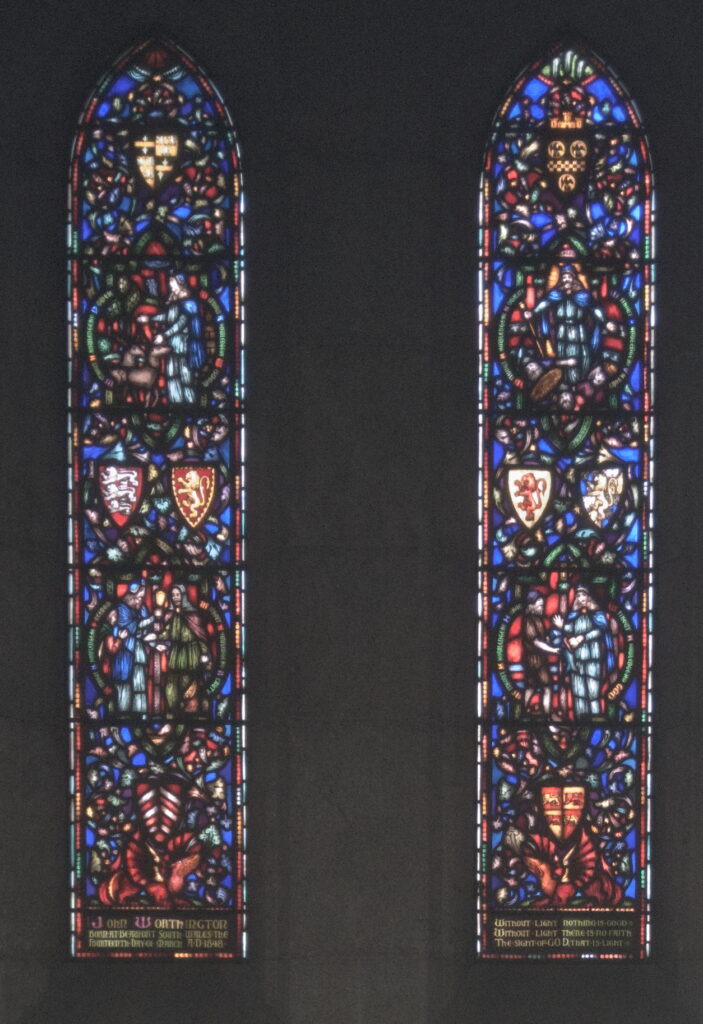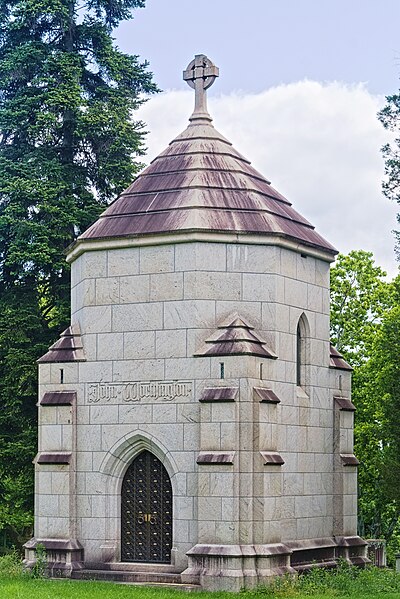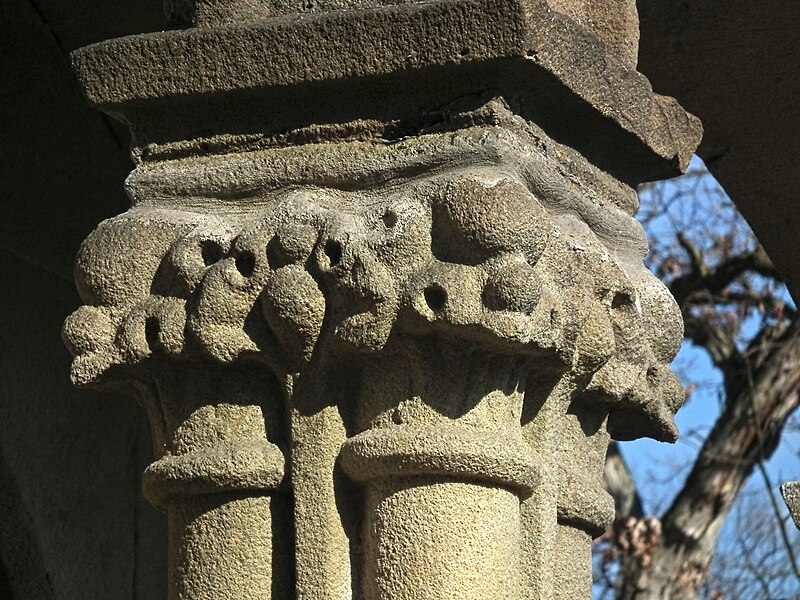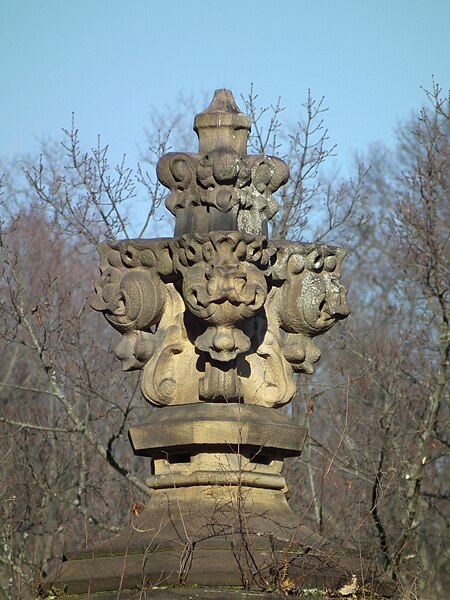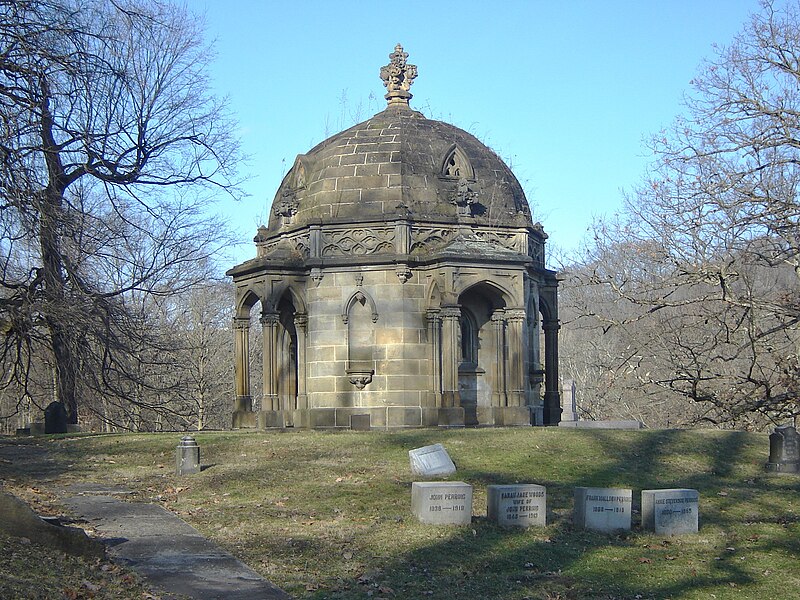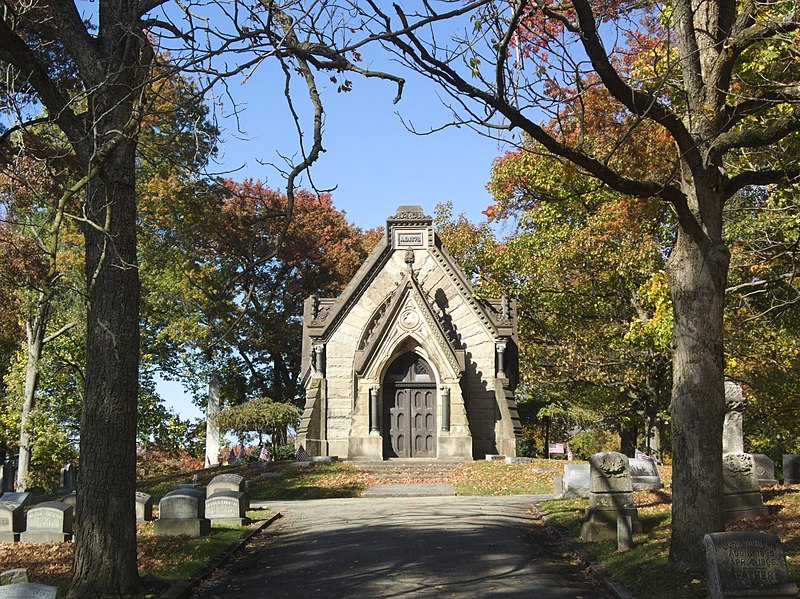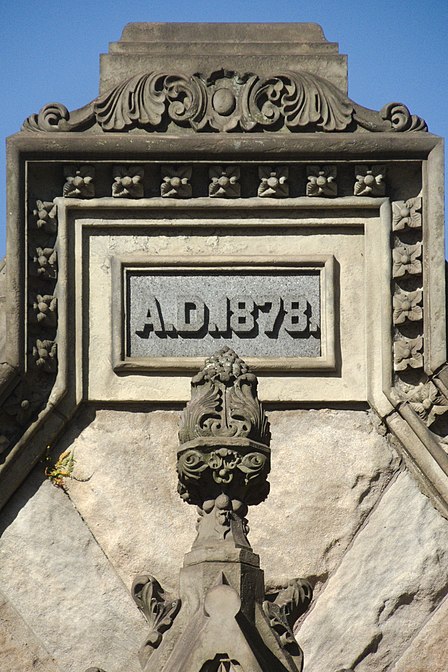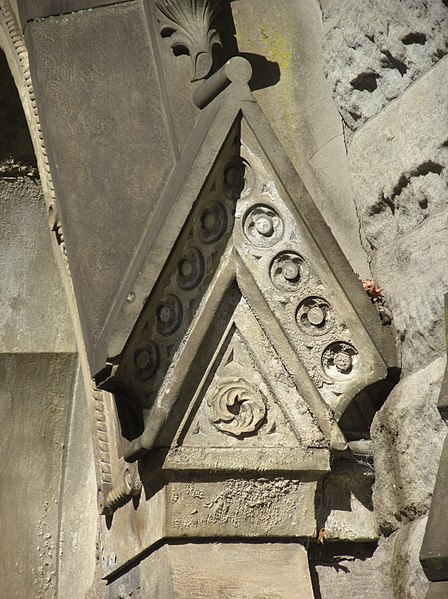
Architect Louis Stevens, who had designed the Worthington mansion in Squirrel Hill (now part of Temple Sinai), also designed this splendid mausoleum for Mr. Worthington to move into after his demise. It is one of the most spectacular mausoleums in the Homewood Cemetery; and, unlike most Gothic mausoleums in Pittsburgh, it takes its inspiration more from castles than from churches.
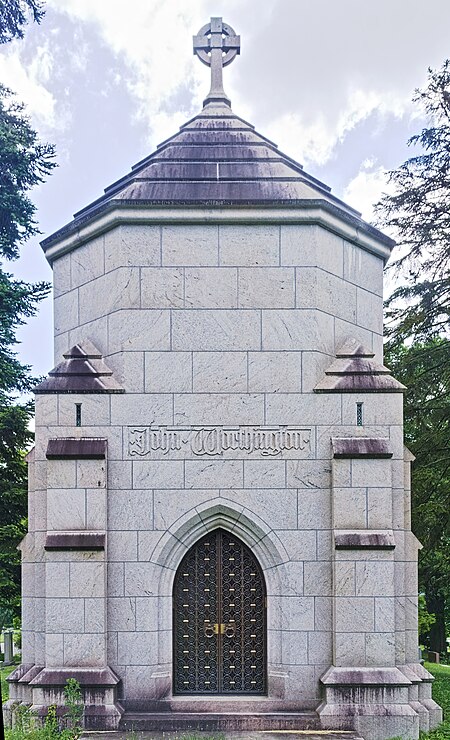

The mausoleum is approached by a stairway that is a work of art in itself.




